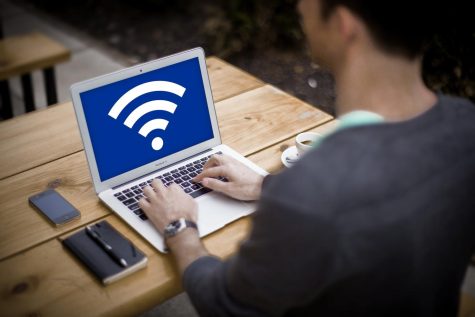NLU past can be offensive
I don’t know if you want to print this or not, or just edit it down, or just read it and forget it… but I have something to say which may or may not matter to you concerning the Northeast Louisiana University (NLU) logo identity of the past. I’m not mad about it or anything, since this history is something that not everyone, especially young people, has heard of. Or maybe it’s common knowledge that no one talks about.
The article in the recent Hawkeye about use and display of the old NLU logo was interesting to me, but I did notice that it didn’t discuss the Elephant in the Room very much, which is crucial to understanding why NLU’s previous identity had to be changed: Why would someone tell a student that wearing the old Indian-head NLU logo is racist? The reason why is the same reason why any of this happened in the first place.
In 2005 ULM took on Ace as the new mascot and athletic logo in place of the former “Indians” name because the NCAA wouldn’t allow Native Americans to be used as mascots, unless an institution has sponsorship of a particular tribe. All of this transpired before I began working here in 2007, so Ace has always been my mascot, but I’ve met (white) people who didn’t think there was anything wrong with having “Indians” as mascots. They’d sound annoyed that they couldn’t have their way, and couldn’t understand when I tried to explain to them that it’s not OK to reduce the dignity and humanity of a race of people by treating them as symbols and caricatures.
Back then, at football games, someone dressed up as an Indian chief would ride onto the field on a real horse. The school newspaper was called the “Pow Wow” and a cafeteria was called the “Wigwam.” Old NLU yearbooks and Pow Wows are filled with images of young white men dressing us as indians. If you don’t understand why this isn’t right, I don’t know what to tell you. That’s not shocking for the 20th century, but what is shocking is the fact that NLU’s rigid infatuation with the Indian mascot and accoutrements was allowed to go on into the 2000s, stopped only by force.
But that wasn’t the only time change occurred by force. In the 1960s, the university was forcibly desegregated. In 1964, prospective student Sarah Louise McCoy had to sue NLSC (Northeast Louisiana State College)because she had been denied admission based on her African American heritage (McCoy v. Louisiana State Board of Education) . She successfully became one of the first African-American students to study on our campus. (There’s some Black History Month content for you). NLSC President Walker at the time stated that NLSC would comply with the federal government’s mandate, but also that he disagreed with it. He said this publicly and overtly. That’s part of Northeast’s history, forever.
Thus changing to the ULM identity and then to a new mascot have both helped the institution move on from that unfortunate past. But we’re still preserving the historical facts of that past in the library, however, because it’s important to remember that overt racism happened right here at home, perpetuated by otherwise intelligent, accomplished people. Still today, it continues in one form or another. But that is no longer who we are. That’s not what ULM aspires to be.
I suppose you can wear Northeast gear for old times’ sake, with no intention of offending anyone. But you must be prepared for the history that those old symbols carry and what their use may imply. Additionally, Ace is cuter and more marketable. I have a stuffed Ace toy. Would I want a stuffed adult male Native American dude? No, not really. True, the Cleveland Indians and Washington Redskins persist, but that is a mistake. Educational intuitions should have higher standards than private professional sports.
Me, I don’t want anything to do with Northeast. Ace and ULM are my symbols. Go Warhawks!
Thanks for taking the time to read that (or not).



Robert • Oct 31, 2024 at 1:38 pm
Well written post but it’s true mistakes were made and stuff covered up
NLU Indians • Jul 23, 2024 at 3:48 pm
As an NLU Indian Alunmus, I am sad that NLU didn’t have the backbone to stand and fight for their mascot. I am of Aztec and Mayan decent and they refused to let me represent them when the NCAA said they needed a tribe to represent them. I have also found out that every tribe in Louisiana came to NLU’s defense and said they could use the tribe name and President James Cofer refused and forced the change. I understand NLU did this so IF the football team made it to the 1A bowl games they can participate in the bowl. However, ULM will never see the light of another bowl game. They don’t have the support they once did as NLU… Home of the Indians. The school has done too much damage to itself and I think it is finally setting in.
Jerry Stone • May 18, 2024 at 8:59 pm
Who cares?
layla • Apr 30, 2024 at 8:23 am
I also agree